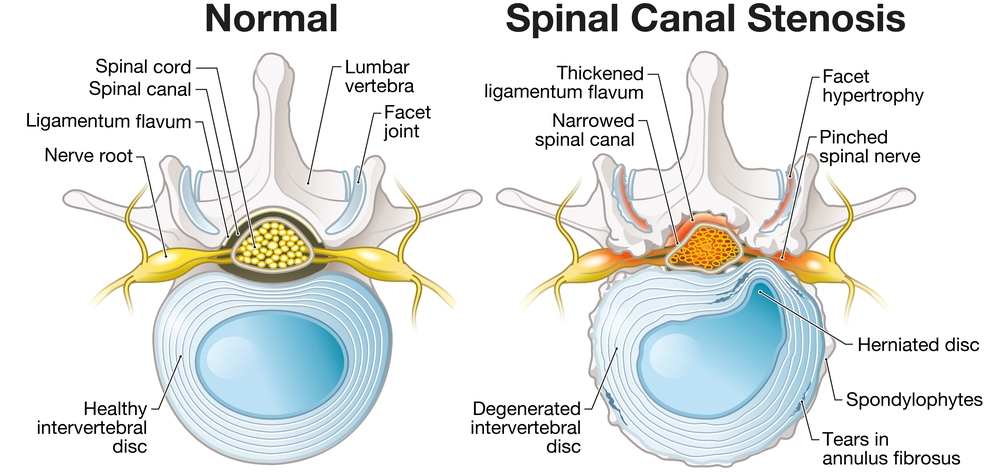Physical Address
304 North Cardinal St.
Dorchester Center, MA 02124
Physical Address
304 North Cardinal St.
Dorchester Center, MA 02124

Contents
Spinal stenosis is a common condition that affects many individuals, causing pain, numbness, and weakness in the legs and buttocks. Over the years, there have been significant advancements in the treatment of spinal stenosis, offering new hope for patients seeking relief. In 2024, the medical field continues to evolve, introducing innovative approaches to managing this condition. Let’s delve into the newest treatment options for spinal stenosis and how they are revolutionizing patient care.
One of the latest developments in spinal stenosis treatment is the emergence of non-fusion techniques like the TOPS System. These innovative implants provide an alternative to traditional spinal fusion procedures, offering benefits such as preserving post-surgical range of motion and reducing the chances of adjacent segment degeneration. By reshaping how medical professionals address spinal stenosis, non-fusion strategies are enhancing patient outcomes and improving overall spinal flexibility.
Moreover, advancements in decompression surgery, including procedures like unilateral laminotomy and spinous process osteotomy, are transforming the approach to managing lumbar spinal stenosis. These revolutionary techniques aim to reduce compression on spinal nerves while maintaining the structural integrity of the spine, leading to improved clinical results and reduced disability for patients.
Dynamic stabilization systems like the LimiFlex play a crucial role in managing spinal stenosis by providing stability to the spine and preserving mobility. These devices offer less invasive treatment options compared to traditional fusion techniques, delivering clinical results that surpass conventional methods. By focusing on dynamic stabilization, medical professionals are enhancing patient care and revolutionizing the treatment of spinal stenosis.
A new surgical technique gaining attention for its approach to easing nerve compression is lumbar interspinous distraction decompression (IDD). By placing a spacer between the vertebrae, IDD aims to relieve pressure on compressed nerves, offering immediate symptom relief for individuals with spinal stenosis. While further research is needed to confirm its long-term effectiveness, IDD presents a promising avenue for managing this condition.
Stem cell therapy is emerging as a revolutionary treatment for spinal stenosis, offering a novel approach to repairing damaged tissue in the spine. By isolating and implanting the body’s fundamental building blocks back into the affected area, stem cell therapy shows potential for alleviating pain and enhancing functional capabilities in patients. Ongoing research and trials are exploring the effectiveness of stem cell therapy in providing relief for individuals with spinal stenosis, paving the way for new treatment possibilities.
Acupotomy, a cutting-edge treatment combining acupuncture principles with surgical methods, is being utilized for spinal stenosis. By targeting thickened ligaments and soft tissue adhesions, acupotomy aims to alleviate tension and discomfort in the spine, offering an alternative treatment option beyond traditional methods. Endorsed by the China Association of Acupuncture-Moxibustion, acupotomy provides an efficacious approach to addressing soft tissue alterations associated with spinal stenosis.
Physical therapy remains a fundamental non-surgical treatment option for spinal stenosis, focusing on strengthening muscles and reducing strain on painful areas. Innovative practices like tailored exercise regimens and alternative therapies such as acupuncture and biofeedback are enhancing standard physical therapy protocols, helping individuals manage pain and improve mobility. Lifestyle adjustments, including regular aerobic activity and mindfulness techniques, play a vital role in managing spinal stenosis symptoms and promoting overall well-being.
Weill Cornell Medicine Pain Management offers cutting-edge technology like the Vertiflex Superion device for treating spinal stenosis and alleviating painful symptoms. This minimally invasive procedure provides a safe and effective treatment option that does not involve surgery, offering patients a quick recovery time and personalized care. With a focus on compassionate and multifaceted pain management, Weill Cornell Medicine delivers high-quality treatment for individuals seeking relief from spinal stenosis.
In conclusion, the landscape of spinal stenosis treatment is evolving rapidly, with innovative approaches like non-fusion techniques, stem cell therapy, and dynamic stabilization systems reshaping patient care. By exploring the frontier of spinal stenosis treatments and integrating alternative therapies and lifestyle adjustments, medical professionals are enhancing outcomes and providing new avenues for managing this condition effectively. As we look towards the future, the newest treatment options for spinal stenosis offer hope and promise for individuals seeking relief and improved quality of life.